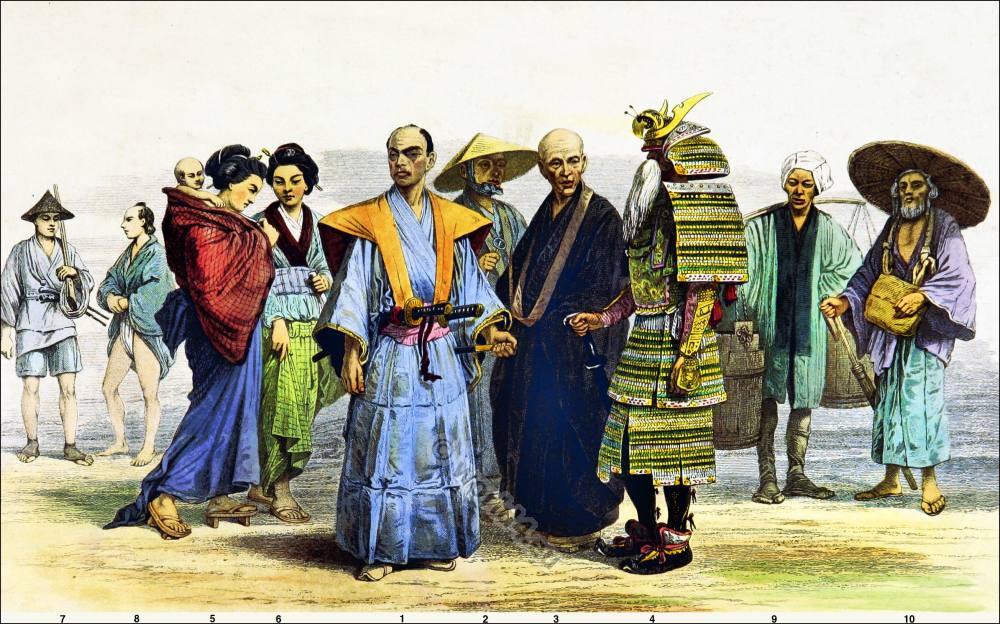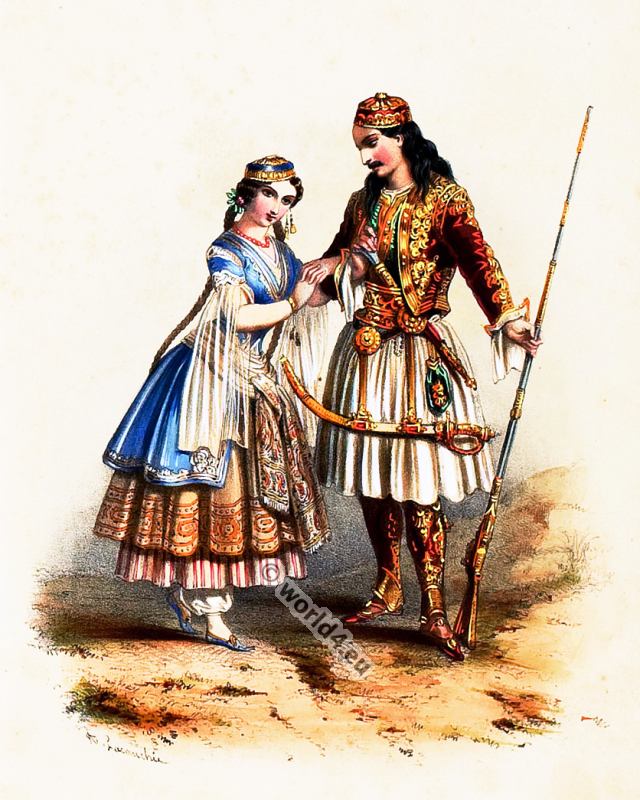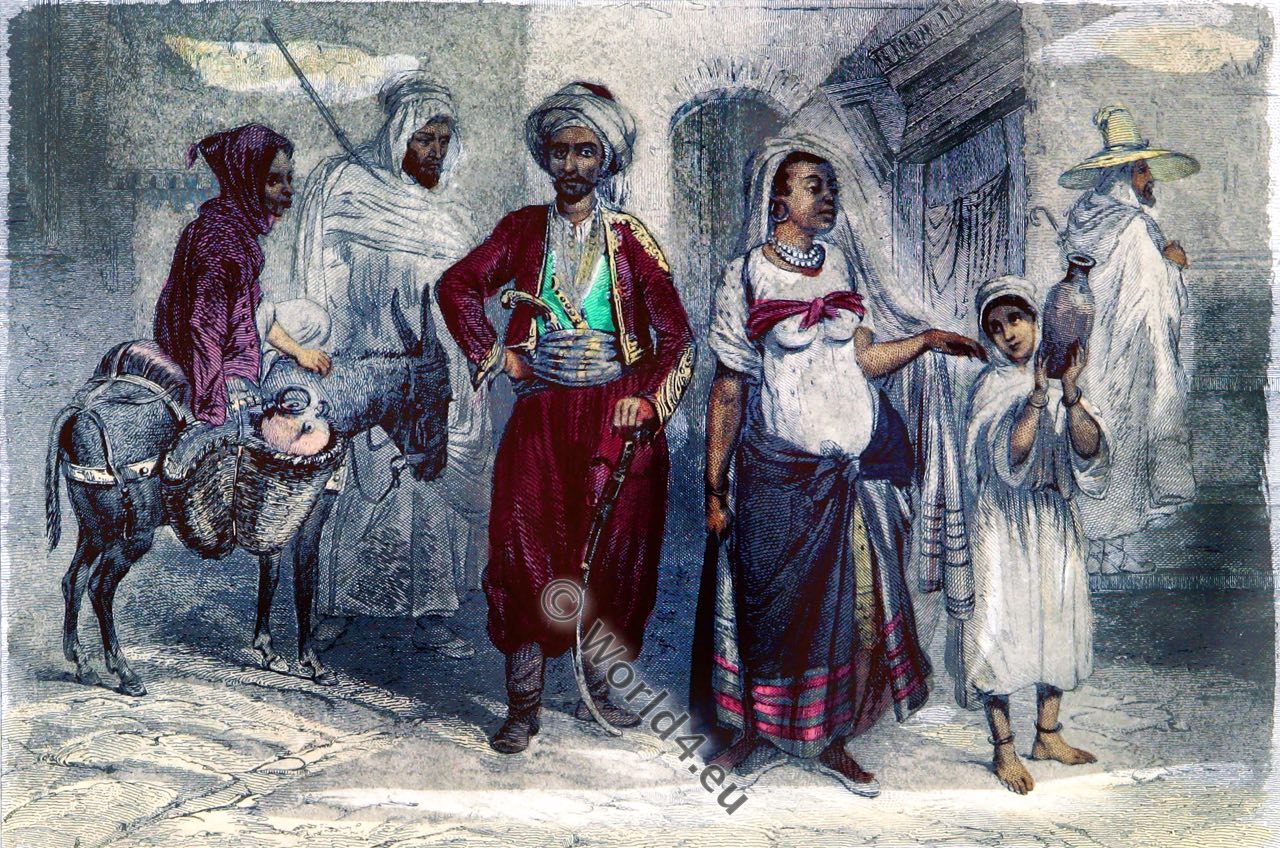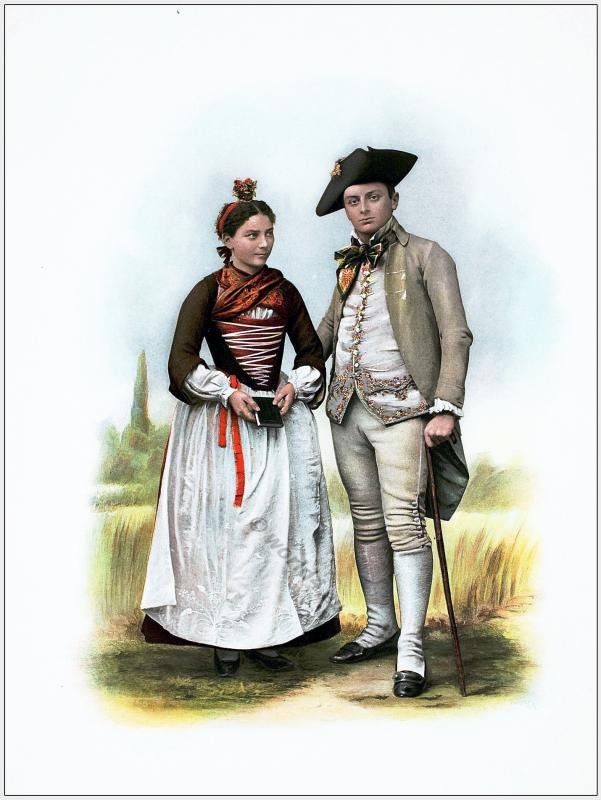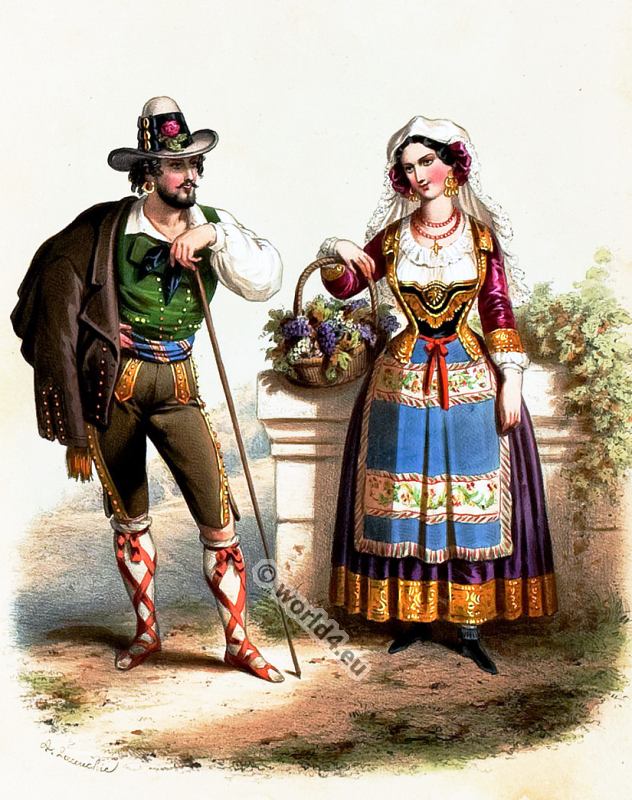
SPAIN BALEARIC ISLANDS AND PITYUSEN. FOLK COSTUMES FROM MALLORCA, IBIZA AND VALENCIA.
Illustrations:
1 2 3 4 5 6 7 8 9
10 11 12 13 14
The costumes depicted here come partly from the Balearic Islands (Mallorca, Minorca and Cabrera), partly from the Pitiusas 1) (Balearic archipelago), of which the most important is Jviza (Ibiza), and partly from the province of Valencia, have been communicated by travellers from the end of the last century and by artists at the beginning of the 19th century and therefore not free from the mistakes common to the artistic products of that time, the lack of naivety and the neglect of the real proportions of the represented figures. However, they are valuable because the traditional costumes have almost completely disappeared (Racinet speaks of the end of the 19th century).
Georges Sand 2), whose work “Un Hiver à Majorque” (1837) describes the slackness and nonchalance of the weak population of these islands so favoured by nature, says that the costumes worn on Majorca by the nobility and the citizens have lost all their original originality and that traces of the old tradition can only be found in the clothing of women and farmers.
According to Alexandre de Laberde (Itinéraire descriptiv de l’Espagne), only the richness of the fabrics and decorations distinguishes the noble ladies from the maidservants and the peasant women. The headgear, called Rebozillo *), which is a kind of hood consisting of a double breast veil. The upper part covers the head and goes around the chin, leaving the face alone free. Then it lies over the shoulders and falls down to the middle of the back, from where the two tips are taken forward and beaten crosswise over each other. Nos. 2, 5, 7, 10 and 13 show this arrangement more or less in accordance with our description.
*) The most outstanding female dress of the Balearic Islands is the Rebozillo. It is a headscarf or a long chest veil, similar to those worn by nuns in monasteries. It covers the head, leaves only the face open, is put together under the chin with a bow, falls down over the shoulders up to almost half of the back and forms in front two corners which cross and close.
In Majorca, these reboozillo are made of muslin. The Minoreans wear a second reboozillo of red wool fabric with a yellow ribbon on top. The women of Ibiza wear a yellow Rebozillo. (Source: Miszellen für die neueste Weltkunde, Band 1. Sauerländer, 1807.)
The skirt is stiffened with fish bone; the very narrow sleeves extend only slightly over the elbows (nos. 10 and 14). The bodice is decorated with silver buckles or buttons. The women wear collars, rings, watches and other jewellery. When they go out, they wear the mantilla (no. 11), as in the rest of Spain, and in their hand, in addition to the fan, a very large rosary decorated with golden tassels and a cross of the same metal.
Like the other Spanish women, the women of Mallorca also look for good footwear. The shoes are heeled, wide against the big toe and pierced with small holes to keep the foot supple and make walking easier.
The skirt is short and hardly reaches down to the calf. At the hips the skirt is pleated. The stockings, blue, red or green, have gussets, of a different colour. Maids and peasant women wear aprons. Nos. 11 and 14 are bourgeois costumes, around 1820, which represent a compromise between tradition and the fashion of the day. Nos. 2, 4, 5 and 7 are not only older, but also more original despite their poverty. There is little difference between the traditional costumes of Mallorca and Minorca. Only on Minorca is the reboozillo in yellow color.
In the male costumes one finds many reminiscences of the Moors: the wide belt, the wide trousers, the shirt, the shots of which come to light and which, when worn alone with the trousers, makes the African character particularly clear (nos. 1, 8 and 9). The other garments are the same as on the mainland coast.
The jacket, the vest, the trousers reaching down to the ankle, the coarse stockings made of white, black or fawn brown wool, the shoes made of untanned and undyed calf leather and without heels, the knitted or leather belt, the long gaiters and as headgear the broad-brimmed hat made of the hair of wild cats, with strings and tassels made of black silk or gold thread.
In the house the inhabitants of Mallorca wrap a cloth around their head. In winter they often wear a black cap covering their tonsure. They shave their heads like priests, either for reasons of cleanliness or religious considerations. Otherwise, they let their hair grow and cut it straight only above the forehead, as was the custom in the Middle Ages. In winter they still pull a grey hood or the fur of the African goat with the hair to the outside over the head.
(No. 1 farmer, 2 burgess, 7 maidservant, 9 shepherds, 10, 11 and 14 come from Mallorca, No. 5 burgess and 6 sailors from Minorca, No. 3 and 4 farmer and farmer’s wife and 8 gardeners from Ibiza, No. 12 and 13 from Valencia). The five large figures after Lante.)
1) Pitiusas: Ibiza, Formentera, Espalmador, Espardell, Es Vedrà, Es Vedranell, Tagomago, Es Frare, Espartar, Illa des Bosc, Illa Sa Conillera, Ses Bledes.
2) A winter in Mallorca describes the time she and Chopin spent on this island from 1838 to 1839. Georges Sand, born Amantine Lucile Aurore Dupin, 1 July 1804 – 8 June 1876, best known by her pseudonym George Sand, was a French writer and memoirist. The most frequently used quote from her is: “There is only one happiness in life to love and be loved.
Source: History of the costume in chronological development by Albert Charles Auguste Racinet. Edited by Adolf Rosenberg. Berlin 1888.
Related
Discover more from World4 Costume Culture History
Subscribe to get the latest posts sent to your email.

